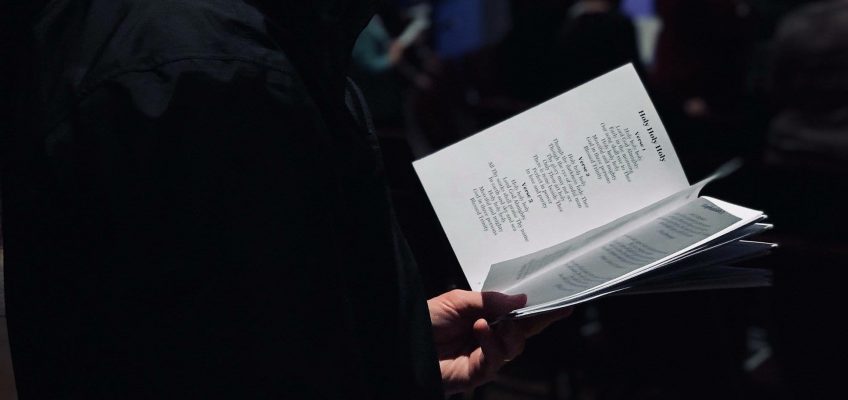We’ve been reviewing principles for choosing liturgical music, starting with the “story” that liturgical music supports, which is the mystery of Christ revealed through the liturgical year. Now let’s look at the people who tell that story — the assembly.
“Sing to the Lord: Music in Divine Worship” (STL), the United States bishops’ document on liturgical music, says: “The musical formation of the assembly must be a continuing concern in order to foster full, conscious, and active participation” (26). As music directors, we are as responsible for forming the assembly in their music making as we are for the choir. In fact, the people, not the choir, are the primary music ministers: “The choir must not minimize the musical participation of the faithful. The congregation commonly sings unison melodies …. This is the primary song of the Liturgy” (28).
Where do your community members need to grow in their faith, musically, liturgically, and theologically? Who in your community is not being represented by your musical choices? Share on XTo choose appropriate liturgical music, you need to know the needs, sensibilities, and capabilities of each of your assemblies. Over the years, what musical resources and styles of presentation (e.g., hymnal, projector, song leader, full choir) have encouraged their best participation in liturgical prayer? Where do they need to grow in their faith, musically, liturgically, and theologically? Who in your community is not being represented by your musical choices?
These and similar kinds of questions help us judge the pastoral quality of our repertoire. See STL 130–132 for more about this pastoral judgment.
This post was first published in “GIA Quarterly: A Liturgical Music Journal.”
Image credit: Tyler Callahan, Unsplash, CC0.


Leave a Reply